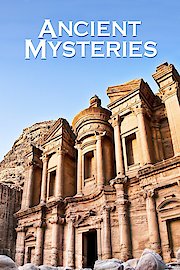The Shroud of Turin is a highly controversial and mysterious piece of cloth believed by some to be the burial shroud of Jesus Christ himself. In Ancient Mysteries season 2 episode 4, experts and investigators explore the many questions surrounding this relic and attempt to uncover the truth about its origins and authenticity.
The show begins by examining the history of the Shroud of Turin and its journey through the centuries. The cloth first appears in recorded history in the 14th century, when it was displayed in a church in Lirey, France. From there, it passed through the hands of various owners and eventually ended up in Turin, Italy, where it remains today.
The episode then delves into the physical characteristics of the shroud itself. The cloth measures approximately 14 feet long and 3.5 feet wide, and is made of a fine, herringbone weave. The image on the shroud appears to be that of a man who was crucified, with wounds visible on his wrists, feet, and side. The man's face is also visible, and appears to bear the marks of severe beatings.
Scientists and scholars have been studying the shroud for decades, using a variety of techniques to try and determine its age and authenticity. One of the most significant discoveries came in the 1980s, when carbon dating tests were performed on the shroud. The results suggested that the cloth dated back only to the 13th or 14th century, leading many to believe that it was a medieval forgery.
However, others have raised questions about the accuracy of these tests, pointing to evidence that the shroud may have been damaged by exposure to fire, water, or other environmental factors that could have skewed the carbon dating results. Other researchers have argued that the cloth may have been altered or repaired over the centuries, making it difficult to determine its true age.
Despite these challenges, scientists have continued to study the shroud using a variety of advanced techniques. In the episode, viewers are introduced to a team of researchers who used high-resolution photography and computer analysis to create a detailed, three-dimensional model of the man's face on the shroud.
Other experts discuss the many theories that have been proposed about the shroud's origins and meaning. Some believe that it was created by medieval artists as a way to inspire devotion and piety, while others suggest that it may have been used in a burial ritual within a particular sect of early Christianity.
The episode also examines the role that the shroud has played in popular culture and religious beliefs throughout history. While many Christians have embraced the shroud as a powerful symbol of their faith, others have criticized it as a possible hoax or forgery.
Overall, The Shroud of Turin episode of Ancient Mysteries offers a fascinating look at one of the world's most mysterious and controversial relics. Though many questions remain unanswered, the show provides viewers with a wealth of information and insights into the ongoing mysteries surrounding this ancient artifact.
-
Genres
-
Channel
-
First AiredApril 21, 1995
-
LanguageEnglish

-
 Free Trial on Amazon Prime
Free Trial on Amazon Prime
-
 Custom Recommendations
Custom Recommendations
-
 Share with Your Family
Share with Your Family


 Free Trial on Amazon Prime
Free Trial on Amazon Prime
 Custom Recommendations
Custom Recommendations
 Share with Your Family
Share with Your Family